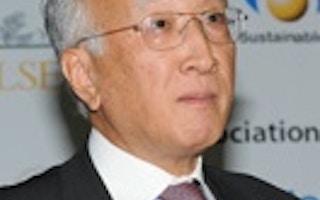No other region in the world has a growing demand for energy like that of Asia. So Asia is facing an energy security challenge – much more acutely than any other regions in the world.
Meeting that challenge with the ‘right’ mix of energy sources was at the core of almost every discussion that took place at the recently-concluded Singapore International Energy Week (SIEW).
The overall talk was of how Asia should shape its energy landscape. And what is abundantly clear is that in addition to the Middle East – which constantly throws up new challenges – we must also take our cue from what is happening elsewhere.
Developments in North America and Europe will, for quite different reasons, impact how Asia fuels its future. Asia must watch, learn and act.
The United States is close to achieving energy independence – which is good news for its economy but could have serious ramifications for many of Asia’s economies including Japan. With its energy security assured, Washington may begin to take a very different geopolitical view of the Middle East.
Consider the potential repercussions for Japan’s economy if an energy self-sufficient United States were to take military action against Iran. As of now, our nuclear power facilities remain closed and we rely on traffic through the Straits of Hormuz for 85 per cent of our oil and 20 per cent of our gas.
The combination of disruption of supply from the Straits of Hormuz – and a continued domestic nuclear power moratorium in Japan could, by some estimates, send the Japanese economy spiralling towards a 12 trillion yen current account deficit and create what would arguably be a man-made economic disaster on the heels of the terrible natural one of March 2011.
So the simple fact is that Asia and Asian governments – while still absolutely obligated to an overall policy of international energy cooperation – also must also focus on strengthening regional energy cooperation and expanding its energy mix.
In these respects, the region must learn from and leapfrog the European model – both in terms of the shared physical infrastructure created by Europe’s grid and the energy diversification driven by both national policy and geographic circumstances.
Europe’s is a very well balanced mix of energy: Like Asia, many countries still depend significantly on coal, even if they are committed to increasing the use of low carbon energy; Sweden draws on its significant hydropower resources; Italy ‘s focus is renewables and gas; France and Belgium still have faith in nuclear. The overwhelming picture is of a group of countries achieving very strong collective security and sustainability. Germany can phase out nuclear power quite simply because its geography places it in the crosshairs of the European electricity grid.
So what can Asia do collectively to both prepare for changes in the geopolitical landscape and emulate the European model?
When I spoke in Singapore recently I highlighted a number of important considerations for Asia: Japan’s Softbank’s Masayoshi Son’s proposal for an Asian Super Grid, smart grids as a key technology for Asia, the ASEAN’s gas pipeline network, the need for Japan to improve its own gas pipeline system, and the potential for East Siberian gas fields to supply Asian needs.
Gas – accepted as the cleaner, acceptable “face” of fossil fuels – is in the ascendancy in Asia and Russia potentially has a key role to play as it may shift its focus from West to East, increasing gas exports to its Asia via both pipelines and LNG exports. However, Russia remains better connected to Western neighbours through the existing gas pipelines. Asia needs to improve its infrastructure to leverage this and improve its own diversity of supply of gas. Currently , the separation of regional gas markets, means Asian gas prices are about five times those in North America and about 50% higher than in Europe.
Renewables also are on every national agenda for energy diversity even though technological limits and high costs currently make them unsuitable for large-scale electricity generation. In Japan’s case this leads us to an awkward truth because the plan to entirely compensate for loss of nuclear energy – which pre-Fukushima met 27 percent of the country’s needs – with renewables is unsustainable.
The Japanese economy is agonising over how to recover from the impact of Fukushima and many industry leaders are now calling for the re-starting of our nuclear reactors excluding those that cannot be upgraded to withstand tsunamis at an acceptable cost. I suspect an increasing element within the government also is considering how to re-establish acceptance.
The post-Fukushima trepidation is entirely understandable. But Fukushima happened because we failed to think the unthinkable. Japan’s future energy landscape cannot be shaped by fear. The new unthinkable for Japan is an economy driven to the brink of meltdown because we took the emotional not the rational route to energy diversity.
Japan’s dilemma is unique in the region – but if Asia really is to create a collective sustainable energy future then each country will have issues to address if they are all to contribute to the greater whole.
Nobuo Tanaka is the global associate for energy security and sustainability at the Institute of Energy Economics in Japan and the former Executive Director of the International Energy Agency.








